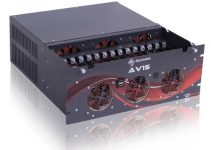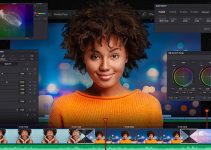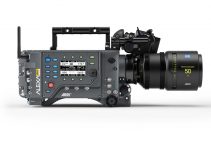Look-up tables can be a fantastic way to maintain a particular reference look across multiple color grading suites and NLEs. The main downside, however, is the inability to modify the LUT itself once it’s applied to your footage. You can only adjust the opacity and strength of the effect as each look-up table only gives you the option to apply more like a baked look to your footage.
If you want to have greater control in that regard, particularly when color grading in Resolve 12.5, you have to utilize Power Grades instead. In a nutshell, this tool provides the ability to have full control over the applied look, plus Power Grades can be easily shared with your collaborators working with DaVinci Resolve 12.5 on the go. Theo of MiesnerMedia shows what else you can achieve by using this proprietary format.
Furthermore, a Power Grade retains not only every correction you’ve made to your footage but also all of the node structure that you’ve been using. Keep in mind, though that each Power Grade preset is a static grade as it doesn’t provide any keyframes or window tracking. When you apply such a stylized look to a clip, the node structure is restored, and all of the user interface controls are set to the saved values.
Beyond that, you can tweak every setting and toggle nodes on or off. They are also an excellent way to learn because you can see exactly how the grade was achieved. LUTs, on the other hand, are supported by a lot more dedicated video editing and color grading applications but unfortunately don’t provide any information about how the grade was built.
To use Power Grades, first, you have to create a PowerGrade album in the Gallery of DaVinci Resolve 12.5 and import the existing power grade .dpx and .drx files as shown in the above video. If you want to create your custom Power Grades, you have to make a certain look, select the clip, right-click and choose Grab a Still. No, when you open the Gallery, you should see all the still grabs that you have created. Move those in a PowerGrade album, and now you can share them with your collaborators.
If you want to export a particular Power Grade, you just have to mark the given grade in the PowerGrade album, right-click and choose Export. This workflow is extremely convenient for situations when you need to reference from multiple projects, such as when color grading a series that shares common, repeatable looks from episode to episode. Unlike stills saved to the other albums in the Gallery, files saved to a PowerGrade album are shared among all projects that you create within a specific database. There are no restrictions how many PowerGrade albums you can create.
All in all, this workflow is way more flexible than just applying a LUT as it gives you a variety of creative options when it comes to color grading. The main downside, however, is that you can use Power Grades only in DaVinci Resolve, unlike look-up tables that can be utilized in any other NLE that supports this particular image conversion format.
[Source: MiesnerMedia]
Disclaimer: As an Amazon Associate partner and participant in B&H and Adorama Affiliate programmes, we earn a small comission from each purchase made through the affiliate links listed above at no additional cost to you.





Seems like a wonderful tool to be used by some people who desire to have some improvements regarding on their work that is related to it. Exposing them to new techniques is a good way for them to learn something new.
This seem like a wonderful tool to be used by some people who desires to have some improvements regarding on their work that is related to it.